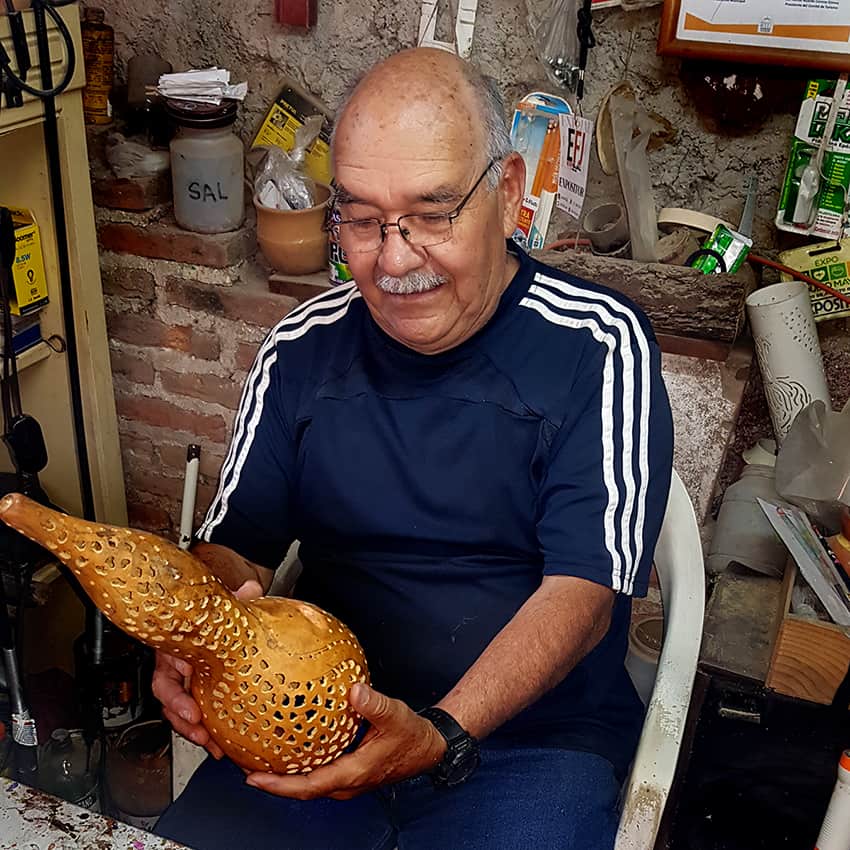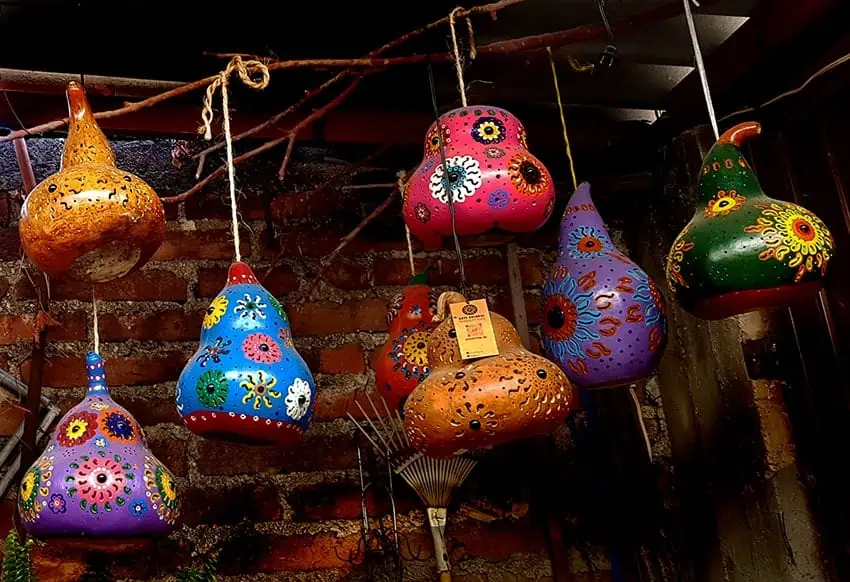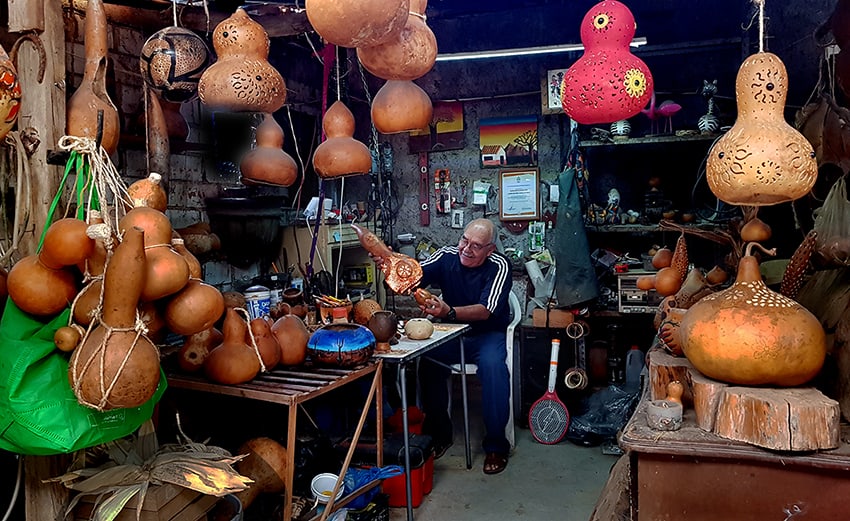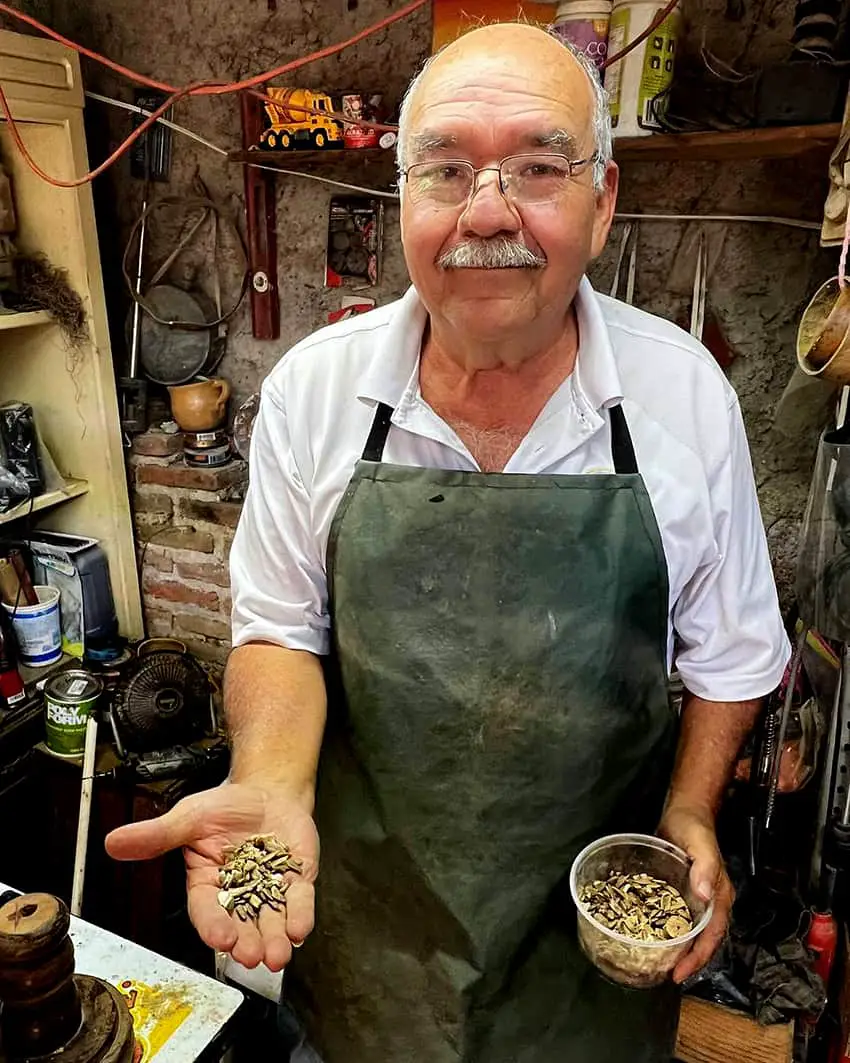Don Pepe and the art of calabash pointillism

Ahualulco de Mercado is a small town in Jalisco, located an hour’s drive west of Guadalajara.
In this small town lives Julio Álvarez, a self-taught ornithologist and highly skilled nature photographer. Every day, I enjoy Álvarez’s photos of birds and animals on his Facebook feed, but last week he turned his camera to a different subject.
“I’d like you all to meet my neighbor, Don Pepe,” he wrote. “Just take a look at how this man turns a lowly bule (calabash or bottle gourd) into a delightful work of art.”
I had no trouble finding a few friends who agreed with me that Don Pepe and his workshop in Ahualulco deserved a visit.
Ahualulco is located on Jalisco Highway 4, which just happens to be full of interesting places to visit. There are the curious circular pyramids or Guachimontones, followed by the extraordinarily beautiful haciendas of La Labor and El Carmen, both now turned into hotel boutiques.
Then there’s the sprawling obsidian deposit of El Pedernal, the bird sanctuary of Agua Blanca and let’s not forget the natural phenomenon of the Great Stone Balls (Las Piedras Bola), a whole mountaintop covered with around a hundred naturally formed stone spheres up to 3 meters in diameter.

There are so many cool things to see along this highway that I’ll leave the topic for another occasion because here we are in Ahualulco, at Calle Pino Suárez 27, and Don Pepe (José Zúñiga Méndez) is welcoming us into his workshop and home.
Everywhere there are calabashes (Lagenaria siceraria), also known as birdhouse gourds and long melons in English. In Mexico, they are commonly called guajes or bules.
In front of me I see gourd bowls, gourd drinking cups, shot glasses, flower pots, ladles, candleholders, tortilla holders… and lots of lamps.
“We have all kinds of lamps,” says Pepe with a big smile, “some that hang from the ceiling, table lamps, desk lamps, nightstand lamps, wall lamps. Gourds were traditionally used to contain water, but I use them to contain light.”

Pepe sits down at his worktable and shows us his tools. Most of them are drill bits. Holding a big gourd on his lap, he drills holes — hundreds of holes — with great precision, some of which are very, very tiny. The groups of holes form shapes.
“Now, let me show you how these lamps look in the dark,” says the artist.
And the moment he turns out the light, all of us gasp: the glowing lamps are truly beautiful, quite unlike anything we’ve seen before.
“My lamps have to look good both in the light and in the dark,” Don Pepe says.
He tells us that his technique is called puntillismo, pointillism, but rather than putting dots on a canvas in the style of Georges Seurat, Pepe creates shapes and patterns made of many, many holes of various sizes.
“I’ve gone to expositions all around Mexico,” he says, “in Chihuahua, Oaxaca and Tijuana, for example, and so far I seem to be the only one using a pointillist technique on gourds.”

“This is a family business,” Pepe goes on to explain. “We have a shop in Tlaquepaque called Arte Natural, and my son is the manager of the store. My grandson sells our products, my granddaughter helps me paint them and on top of that, I have employees, all of whom are handicapped. So they work here in wheelchairs. Right now, I am supplying these lamps to two different hotels in Puerto Vallarta.”
I was surprised to learn that Don Pepe spent 30 years working for IBM before he started transforming gourds.
“We’re the ones who brought the PC to Mexico, from Boca Raton,” he told us.
“When I retired from IBM,” he went on, “I started doing this work with guajes as occupational therapy. I wanted to do something that doesn’t harm the environment and at the same time helps to preserve traditions that are starting to fade away. That’s how it started. And now I love what I’m doing!”

“Where do you get your guajes?” I asked Don Pepe.
“Bueno,” he said. “We are constantly cleaning out the insides of these gourds, so we have seeds falling on the ground all over the place — and they sprout! Naturally, we take advantage and collect the little seedlings, and at the end of June, when the weather is right, we plant them in a tract of land we have.
“If you start with a seed, 10 days later, you will have a plant. In September, we have gourds, and these will be fully mature in November or December, but we wait all the way until January to pick them. If you try to harvest them earlier, they shrivel up and die.”
After that, they put them out to dry, after which they can finally work them, he says.
The bottle gourd is believed to be one of the first cultivated plants of the world. It was domesticated over 10,000 years ago.
“In Mexico,” commented Don Pepe, “bules were used to store all kinds of ingredients in our grandmothers’ kitchens: corn, wheat, beans. Meanwhile, our grandfathers used them as canteens to carry water to the fields. Then along came plastic, and it was all over for the gourd!”
Not exactly. Don Pepe’s creations have appeared in expositions at various cities in Mexico, and a few have traveled all the way to Germany, France, China, Japan and India.
If you find yourself in Guadalajara, you can see them at his Arte Natural gallery in Tlaquepaque, at Independencia 48 street, in Plaza Pavo Real. The telephone number is 332 655 0802.
The writer has lived near Guadalajara, Jalisco, since 1985. His most recent book is Outdoors in Western Mexico, Volume Three. More of his writing can be found on his blog.
Source: Mexico News Daily

